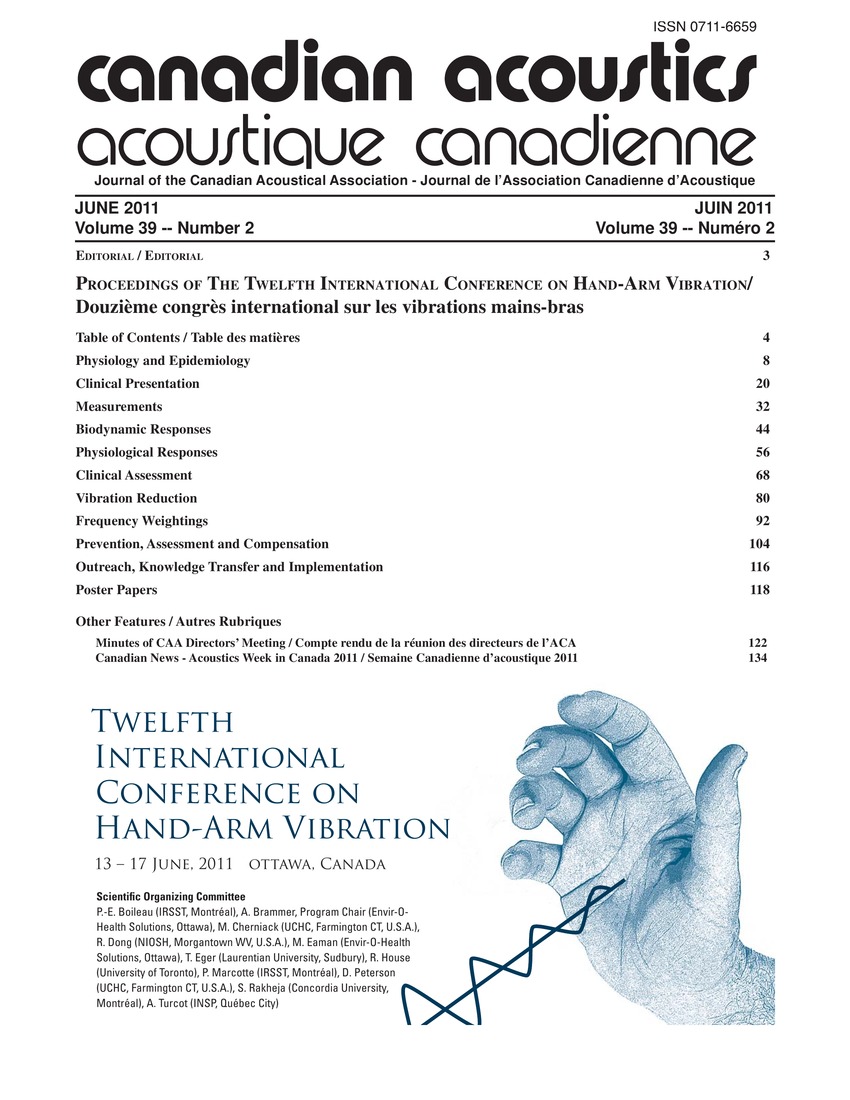Glove use and education in workers with hand-arm vibration syndrome
Keywords:
Education, Industrial hygiene, Machine vibrations, Occupational diseases, Hand-arm vibration syndrome, Health and safety, Occupational health and safety, Ontario, Protective gloves, Self-administered questionnaire, Toronto, Workplace exposureAbstract
The current education practices related to glove use and the relationship between glove use education and glove use compliance are described. A self-administered questionnaire was developed exploring participant demographics, workplace characteristics, workplace exposures, protective glove characteristics, glove use compliance, provision of glove use education, and glove supply characteristics. Participants included consecutive patients presenting to SMHOEHC in Toronto, Ontario for investigation of HAVS. Eighty-eight percent reported the presence of a workplace joint health and safety committee, 87% reported receiving occupational health and safety training, and 97% reported receiving Workplace Hazardous Materials Information System (WHMIS) training. The barriers workers reported to glove compliance included discomfort and difficulty using the gloves because of restraint and bulkiness.Additional Files
Published
How to Cite
Issue
Section
License
Author Licensing Addendum
This Licensing Addendum ("Addendum") is entered into between the undersigned Author(s) and Canadian Acoustics journal published by the Canadian Acoustical Association (hereinafter referred to as the "Publisher"). The Author(s) and the Publisher agree as follows:
-
Retained Rights: The Author(s) retain(s) the following rights:
- The right to reproduce, distribute, and publicly display the Work on the Author's personal website or the website of the Author's institution.
- The right to use the Work in the Author's teaching activities and presentations.
- The right to include the Work in a compilation for the Author's personal use, not for sale.
-
Grant of License: The Author(s) grant(s) to the Publisher a worldwide exclusive license to publish, reproduce, distribute, and display the Work in Canadian Acoustics and any other formats and media deemed appropriate by the Publisher.
-
Attribution: The Publisher agrees to include proper attribution to the Author(s) in all publications and reproductions of the Work.
-
No Conflict: This Addendum is intended to be in harmony with, and not in conflict with, the terms and conditions of the original agreement entered into between the Author(s) and the Publisher.
-
Copyright Clause: Copyright on articles is held by the Author(s). The corresponding Author has the right to grant on behalf of all Authors and does grant on behalf of all Authors, a worldwide exclusive license to the Publisher and its licensees in perpetuity, in all forms, formats, and media (whether known now or created in the future), including but not limited to the rights to publish, reproduce, distribute, display, store, translate, create adaptations, reprints, include within collections, and create summaries, extracts, and/or abstracts of the Contribution.


